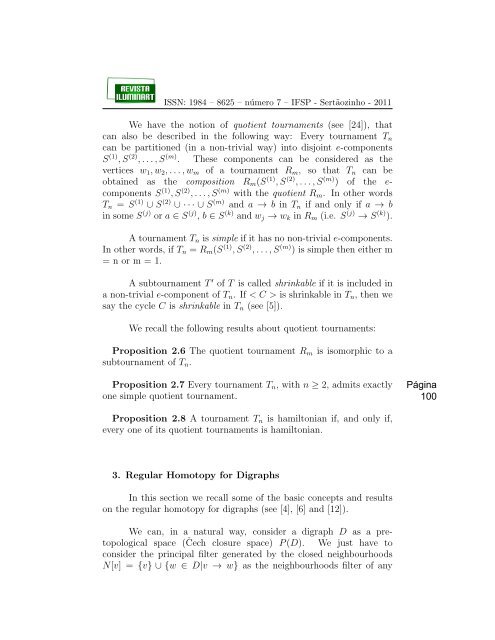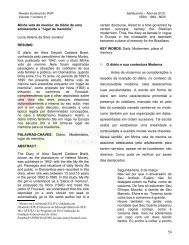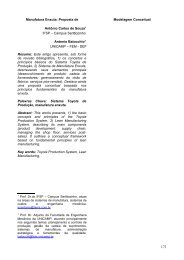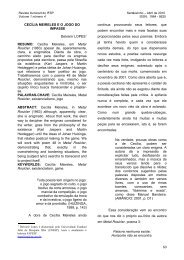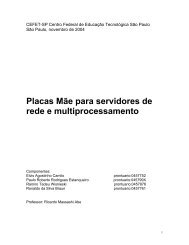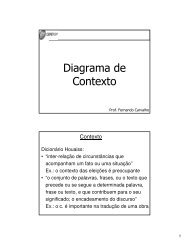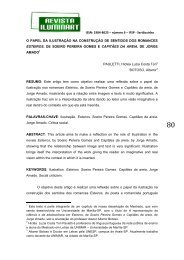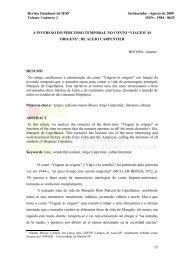Página 97
Página 97
Página 97
You also want an ePaper? Increase the reach of your titles
YUMPU automatically turns print PDFs into web optimized ePapers that Google loves.
ISSN: 1984 – 8625 – número 7 – IFSP - Sertãozinho - 2011<br />
We have the notion of quotient tournaments (see [24]), that<br />
can also be described in the following way: Every tournament Tn<br />
can be partitioned (in a non-trivial way) into disjoint e-components<br />
S (1) , S (2) , . . . , S (m) . These components can be considered as the<br />
vertices w1, w2, . . . , wm of a tournament Rm, so that Tn can be<br />
obtained as the composition Rm(S (1) , S (2) , . . . , S (m) ) of the ecomponents<br />
S (1) , S (2) , . . . , S (m) with the quotient Rm. In other words<br />
Tn = S (1) ∪ S (2) ∪ · · · ∪ S (m) and a → b in Tn if and only if a → b<br />
in some S (j) or a ∈ S (j) , b ∈ S (k) and wj → wk in Rm (i.e. S (j) → S (k) ).<br />
A tournament Tn is simple if it has no non-trivial e-components.<br />
In other words, if Tn = Rm(S (1) , S (2) , . . . , S (m) ) is simple then either m<br />
= n or m = 1.<br />
A subtournament T ′ of T is called shrinkable if it is included in<br />
a non-trivial e-component of Tn. If < C > is shrinkable in Tn, then we<br />
say the cycle C is shrinkable in Tn (see [5]).<br />
We recall the following results about quotient tournaments:<br />
Proposition 2.6 The quotient tournament Rm is isomorphic to a<br />
subtournament of Tn.<br />
Proposition 2.7 Every tournament Tn, with n ≥ 2, admits exactly<br />
one simple quotient tournament.<br />
Proposition 2.8 A tournament Tn is hamiltonian if, and only if,<br />
every one of its quotient tournaments is hamiltonian.<br />
3. Regular Homotopy for Digraphs<br />
In this section we recall some of the basic concepts and results<br />
on the regular homotopy for digraphs (see [4], [6] and [12]).<br />
We can, in a natural way, consider a digraph D as a pretopological<br />
space ( Čech closure space) P (D). We just have to<br />
consider the principal filter generated by the closed neighbourhoods<br />
N[v] = {v} ∪ {w ∈ D|v → w} as the neighbourhoods filter of any<br />
<strong>Página</strong><br />
100


